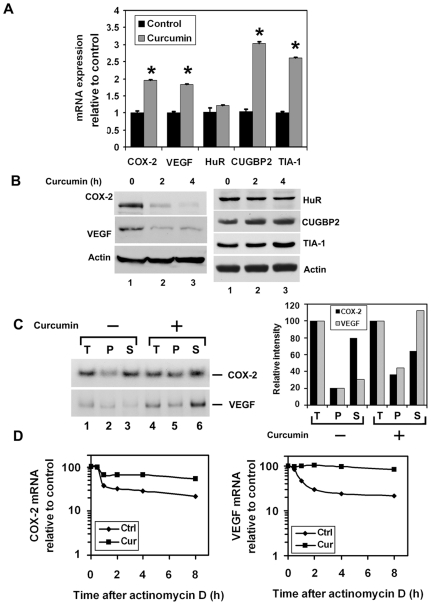Figure 5. Curcumin inhibits COX-2 and VEGF protein expression in pancreatic cancer cells while inducing CUGBP2 and TIA-1.
(A) mRNA expression. MiaPaCa-2 cells were treated with curcumin for 2 h. Curcumin treatment increased the levels of COX-2, VEGF, CUGBP2 and TIA-1 mRNA. There was no significant change of HuR mRNA expression (* p<0.05). Data from three independent experiments. (B) Western blot analyses demonstrate that lysates with curcumin treated MiaPaCa-2 cells have lower levels of COX-2 and VEGF proteins and increasing levels of CUGBP2 and TIA-1. Representative of three independent experiments. (C) (Left panel), Increased binding of CUGBP2 binding to COX-2 or VEGF mRNA following curcumin treatment. Whole cell extract (T) from curcumin-treated cells were immunoprecipitated with anti-CUGBP2 antibody, and RNA from the immunoprecipitates (P) and supernatant (S) were isolated and subjected to RT-PCR for COX-2 and VEGF mRNA. Data demonstrates increased COX-2 or VEGF mRNA in the pellet of curcumin-treated cells. (Right panel) Data was quantified and there was a clear increase in COX-2 and VEGF mRNA in the pellet of curcumin treated cells. (D) MiaPaCa-2 cells were treated with curcumin for 2 h and the stability of COX-2 and VEGF mRNA were determined following addition of actinomycin D (final concentration: 10 µg/ml). Curcumin increases the half-life of COX-2 mRNA from 30 min to 8 h. Similarly, curcumin increased the half-life of VEGF mRNA from 30 min to 8 h. Data demonstrates curcumin treatment significantly increased stability of COX-2 or VEGF mRNA.

